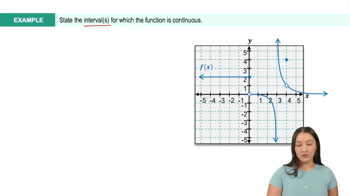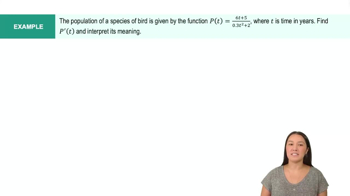Here are the essential concepts you must grasp in order to answer the question correctly.
Limits
In calculus, a limit describes the behavior of a function as its input approaches a certain value. Specifically, the limit as t approaches infinity examines how the function behaves as time progresses indefinitely. Understanding limits is crucial for determining the long-term behavior of dynamic systems, such as whether they stabilize or diverge.
Recommended video:
Steady State
A steady state in a system occurs when the variables of interest no longer change over time, indicating that the system has reached equilibrium. Mathematically, this is represented by the existence of a limit as time approaches infinity. In the context of the given function, identifying the steady-state value involves evaluating the limit of the population function as time increases.
Recommended video:
Intro to Continuity Example 1
Population Dynamics
Population dynamics is a field of study that examines how populations change over time due to various factors such as birth, death, and resource availability. The function provided, p(t) = 2500/(t+1), models the growth of a bacterial culture, illustrating how the population evolves and approaches a maximum capacity as time progresses. Understanding these dynamics is essential for analyzing the behavior of biological systems.
Recommended video:
The Quotient Rule Example 5
 Verified step by step guidance
Verified step by step guidance Verified video answer for a similar problem:
Verified video answer for a similar problem:



 6:47m
6:47m